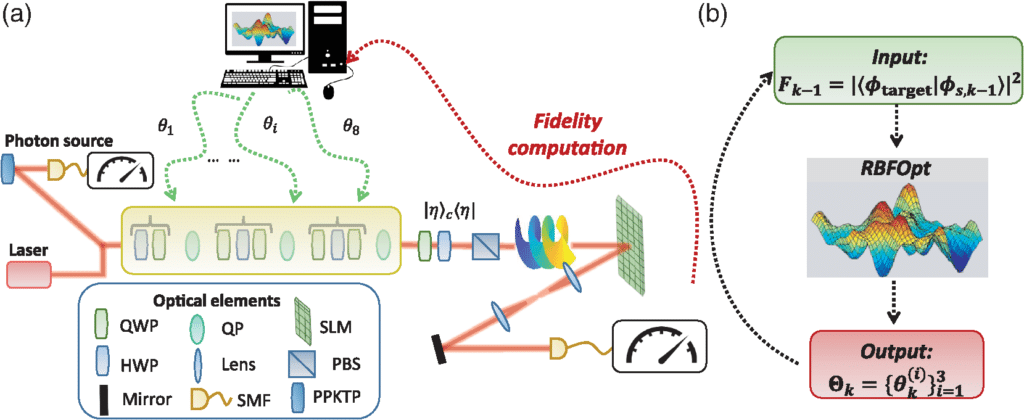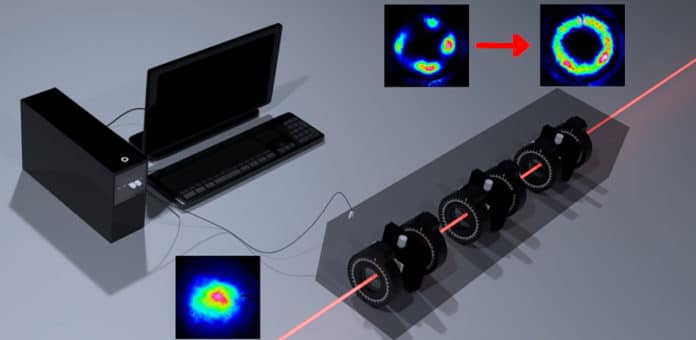Experimental engineering of high-dimensional quantum states is crucial for several quantum information protocols. It enables better performances in applications ranging from secure quantum communications to fault-tolerant quantum computation.
However, a high degree of precision in the characterization of the noisy experimental apparatus is required to apply existing quantum-state engineering protocols. This is often lacking in practical scenarios, affecting the quality of the engineered states.
To overcome limitations such as the unavoidable presence of noise, and imperfections in the characterization of experimental apparatuses, diminish the overall quality of the state generation; a team of researchers from Sapienza Università di Roma, Queen’s University of Belfast, and Università degli Studi di Palermo, demonstrate the use of an adaptive optimization protocol that can engineer arbitrary high-dimensional states, as reported in Advanced Photonics.
Within a fully black-box scenario, the protocol tunes the relevant experimental parameters relying only on the measured agreement between produced and target state, without needing a description of the generation setup.
The authors present experimental verification of the proposed protocol using classical light and single photons’ orbital angular momentum (OAM). OAM is a degree of freedom of the electromagnetic field related to its spatial and phase profile. Since the OAM is an infinite-dimensional degree of freedom, it is suitable for encoding arbitrary high-dimensional quantum states. The authors experimentally implement the protocol using a state-generation platform based on quantum-walk dynamics in the OAM and polarization degrees of freedom. By tuning the parameters of the operators acting on the polarization state, an arbitrary walker state encoded in the OAM space can be engineered. The proposed optimization algorithm then performs an online tuning of the experimental parameters driving the dynamics to obtain the desired outcome.

The optimization protocol is shown to perform well when subject to noisy experimental conditions for several four-dimensional target OAM states. Finally, the team investigated the adaptability of the protocol by introducing time-varying noise as an external perturbation on the values of the parameters. The protocol found the new optimal solution after the introduction of these external perturbations. The proposed protocol is applicable in a wide variety of circumstances, even in the presence of disturbance, without needing significant fine-tuning.
According to senior author Fabio Sciarrino, head of the Quantum Information Lab in the Department of Physics of Sapienza Università di Roma, “The proposed dynamical learning protocol will be beneficial for several quantum information tasks that require finding optimal values of experimental parameters under noisy conditions.”
Journal Reference
- Alessia Suprano, Danilo Zia, Emanuele Polino, Taira Giordani, Luca Innocenti, Alessandro Ferraro, Mauro Paternostro, Nicolò Spagnolo, Fabio Sciarrino. Dynamical learning of a photonics quantum-state engineering process. Advanced Photonics, 3(6), 066002 (2021). DOI: 10.1117/1.AP.3.6.066002
